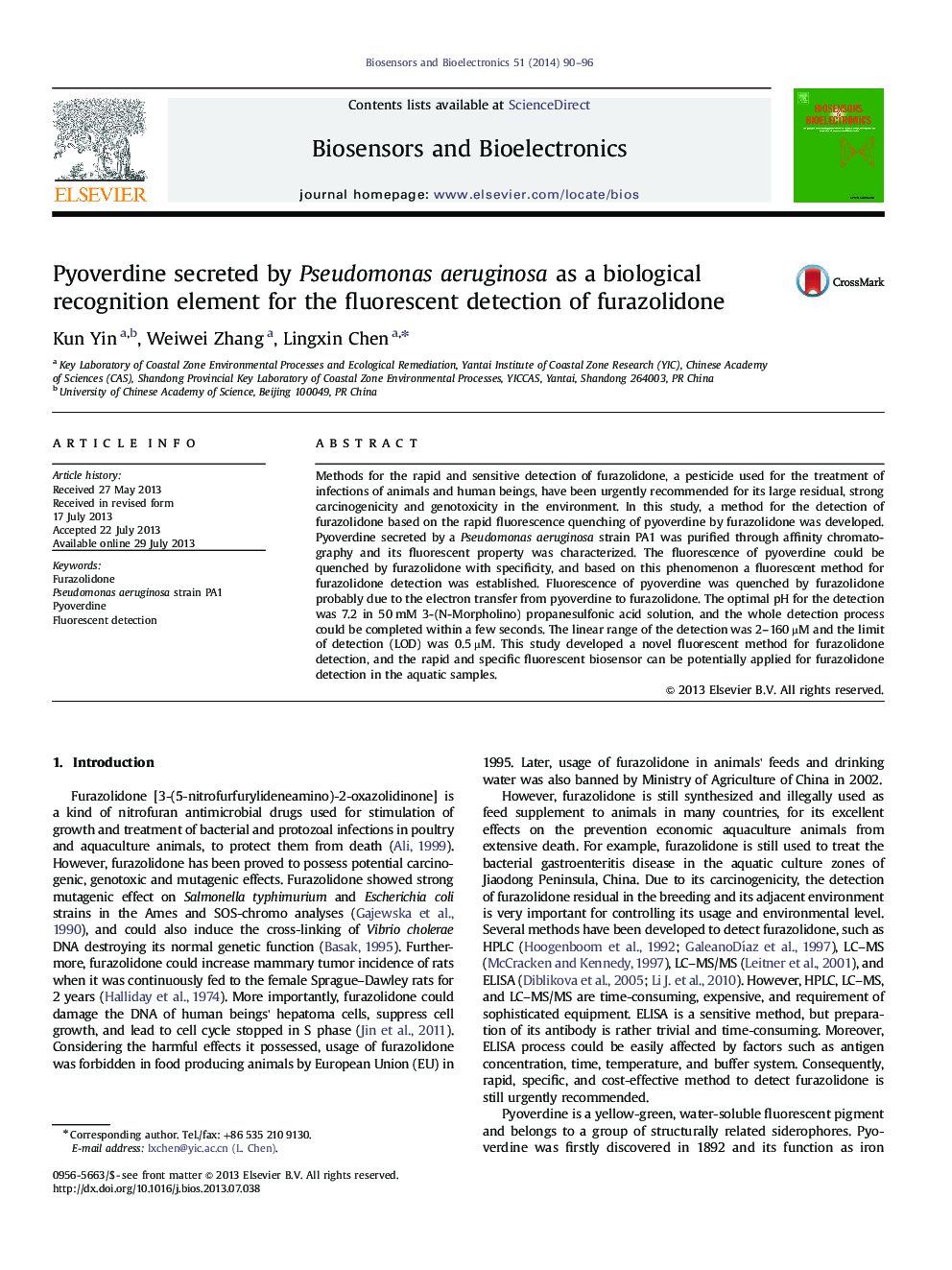| Article ID | Journal | Published Year | Pages | File Type |
|---|---|---|---|---|
| 866554 | Biosensors and Bioelectronics | 2014 | 7 Pages |
•Pyoverdine secreted by Pseudomonas aeruginosa PA1 was purified by affinity chromatography.•The fluorescence of pyoverdine can be quenched by furazolidone with specificity.•A rapid and sensitive method to detect furazolidone was established.
Methods for the rapid and sensitive detection of furazolidone, a pesticide used for the treatment of infections of animals and human beings, have been urgently recommended for its large residual, strong carcinogenicity and genotoxicity in the environment. In this study, a method for the detection of furazolidone based on the rapid fluorescence quenching of pyoverdine by furazolidone was developed. Pyoverdine secreted by a Pseudomonas aeruginosa strain PA1 was purified through affinity chromatography and its fluorescent property was characterized. The fluorescence of pyoverdine could be quenched by furazolidone with specificity, and based on this phenomenon a fluorescent method for furazolidone detection was established. Fluorescence of pyoverdine was quenched by furazolidone probably due to the electron transfer from pyoverdine to furazolidone. The optimal pH for the detection was 7.2 in 50 mM 3-(N-Morpholino) propanesulfonic acid solution, and the whole detection process could be completed within a few seconds. The linear range of the detection was 2–160 µM and the limit of detection (LOD) was 0.5 µM. This study developed a novel fluorescent method for furazolidone detection, and the rapid and specific fluorescent biosensor can be potentially applied for furazolidone detection in the aquatic samples.
